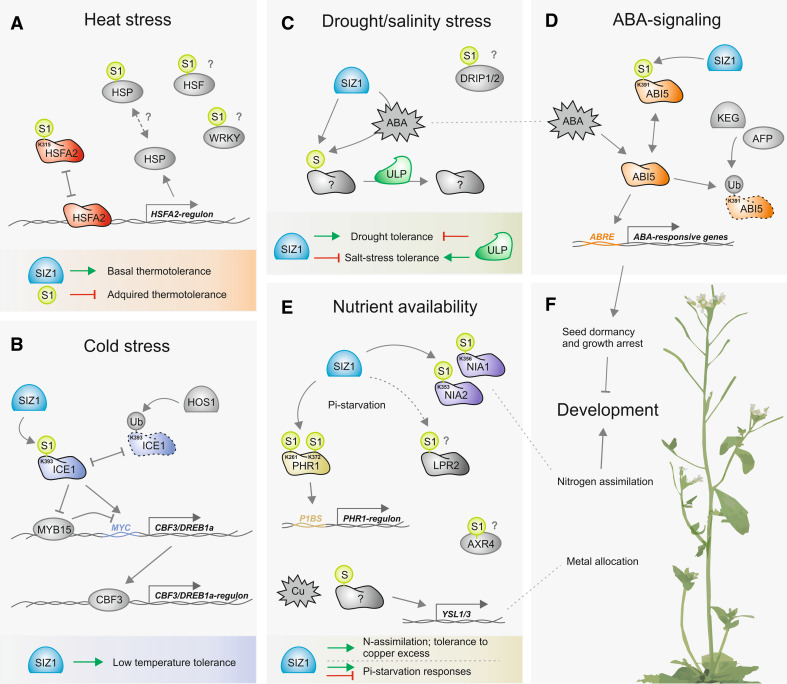Fig. 3.
Molecular aspects of the SUMO-abiotic stress association in Arabidopsis thaliana. a SIZ1 is a positive regulator of basal thermotolerance. Heat shock likely induces sumoylation of several heat shock factors (HSFs), heat shock proteins (HSPs), and WRKYs. Sumoylation of HSFA2 blocks its activity and consequently down-regulates acquired thermotolerance. b Cold stress regulates the transcription factor (TF) ICE1 through SIZ1-dependent sumoylation, antagonizing HOS1-dependent ubiquitination (Ub) and the degradation of ICE1. Sumoylation activates ICE1 inhibiting MYB15 expression and activating the CBF3/DREB1a-regulon. c Salt and drought stress responses seem to be antagonistically regulated by SIZ1 and ULP1c/d. SIZ1 sumoylates and exerts a positive effect on key regulators of the drought response, while ULP1c/d may counteract this effect by removing SUMO from the target. d ABI5, a key TF in the abscisic acid (ABA) signaling pathway, is sumoylated by SIZ1, which antagonizes ABI5-ubiquitination but also inactivates ABI5 TF activity. e Nutrient availability can be controlled by SUMO. SIZ1 sumoylates nitrate reductases NIA1 and NIA2, contributing positively to nitrogen (N) assimilation. In response to inorganic phosphate (Pi) starvation, SIZ1 bi-sumoylates PHR1 and possibly LPR2, activating the expression of the PHR1-regulon and blocking LPR2 function in the remodeling of root architecture under conditions of Pi starvation. In response to excess copper (Cu), SIZ1 sumoylates an unknown target that directly or indirectly regulates expression of YSL1/3, important for metal re-allocation. f Sumoylation impacts on development at various levels, including ABI5-mediated seed dormancy and growth arrest, nutrient homeostasis, and allocation of metal ions

